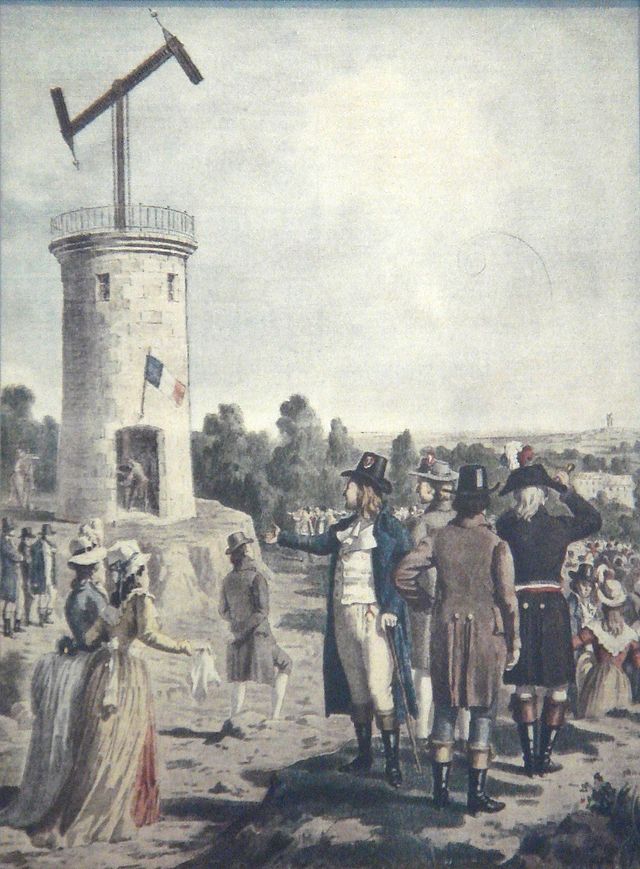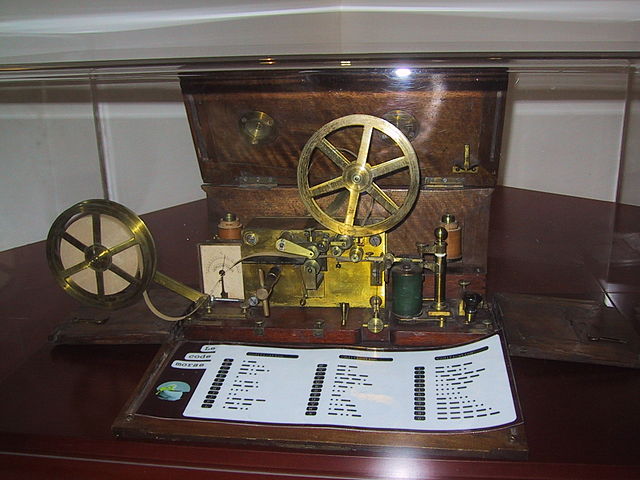For most of human history information could only travel at the speed a person could run, a horse could ride, or a ship could sail. The persisted until only very recently. For instance only around 250 years ago during the American Revolution it would take months to communicate from the colonies to Britain across the Atlantic. Today that same communication can happen in an instant. The electric telegraph was the first major breakthrough of modern telecommunications.
Early Forms of Telegraphy
A telegraph is a from of long distant communication, as spelled out in the root meaning of its name: tele – at a distant, and graph – to write. Some of the earliest forms of long distant communication include light signals, drum beats and smoke signals. These measures were employed with varying but mostly minimal success. In Ancient China, soldiers positioned in towers along the Great Wall would use smoke signals to warn of impending attackers. Native Americans were particularly well known for using smoke signals to communicate over long distances. First, tribes would agree on a communication system – such as one puff for a greeting, two puffs for danger, and so on. However despite some effectiveness these communication systems were limited in their ability to communicate complex messages and required certain weather conditions.
When people think of a telegraph today most are probably referring to the electric telegraph. However the first true telegraph that was put into widespread use was the optical telegraph, invented by Claude Chappe in the late 1700s during the tumultuous time of the French Revolution. With events happening at a frantic pace, French government was in need of fast and reliable communication during the revolution. Claude Chappe, along with his brother Ignace Chappe began working on the problem in the summer of 1790. The system they developed used semaphore shutters positioned on top of towers to transmit light signals that corresponded to letters. Relay towers could be positioned approximately every 20 miles and messages could be transmitted distances of over a hundred miles at a rate of approximately two words per minute.
The Electric Telegraph Transforms Communications
The electrical telegraph harnessed the new science of electricity to revolutionize long distance communication. Early experiments in the 18th century demonstrated effects of electricity and showed that it could be transmitted across a wire almost instantly. Alessandro Volta developed a battery providing a steady source of energy. The electric telegraph combined these new discoveries, making it was the first valuable invention of applied electricity before 1860s, the decade James Clark Maxwell brought together all the laws of electromagnetism in his mathematical formulations.
To transmit a telegraph electrically there needs to be two or more stations connected by a wire. The first working electrical telegraph was made by a British inventor named Francis Ronald in 1816. His invention was met with little fanfare by the British government. Over the next few decades several other inventors built improved versions of the electric telegraph with limited success. It was Samuel Morse in the 1830s and 1840s who finally brought the invention into the mainstream. The telegraphic system Morse developed is still used sparingly today and is known to most as Morse Code. Morse Code encodes 26 letters and 10 numbers into a series of dots and dashes that that can be used to communication a written message electrically across a wire.
Morse used his new system to send his first message across a two mile wire in Morristown, New Jersey in 1838. The United States Congress quickly realized the benefits of Morse’s system and they provided the funds to set up a wire from Baltimore to Washington D.C. in 1843. On May 21, 1844 the famous first message “what hath god wrought” was transmitted across this 44 mile line. Within two years the telegraph become such an integral part of communication in the United States that the Associated Press was formed. The telegraph grew so rapidly that by 1875 there were over 250,000 miles of telegraph wires in the United States alone and over 100,000 miles of wire undersea, linking with world together as never before.
A Short Lived Reign
The electric telegraph took only a few generations complete its full product life cycle complete – an ominous sign of things to come for the telecommunications industry. The telephone, invented 40 years after the telegraph, can be said to mark the beginning of the end for the telegraph. Radio communications only accelerated its decline. Today telecommunication technologies can rise and fall in a single generation. However many of these technologies owe its scientific roots to the invention of the electric telegraph.
Continue reading more about the exciting history of science!

